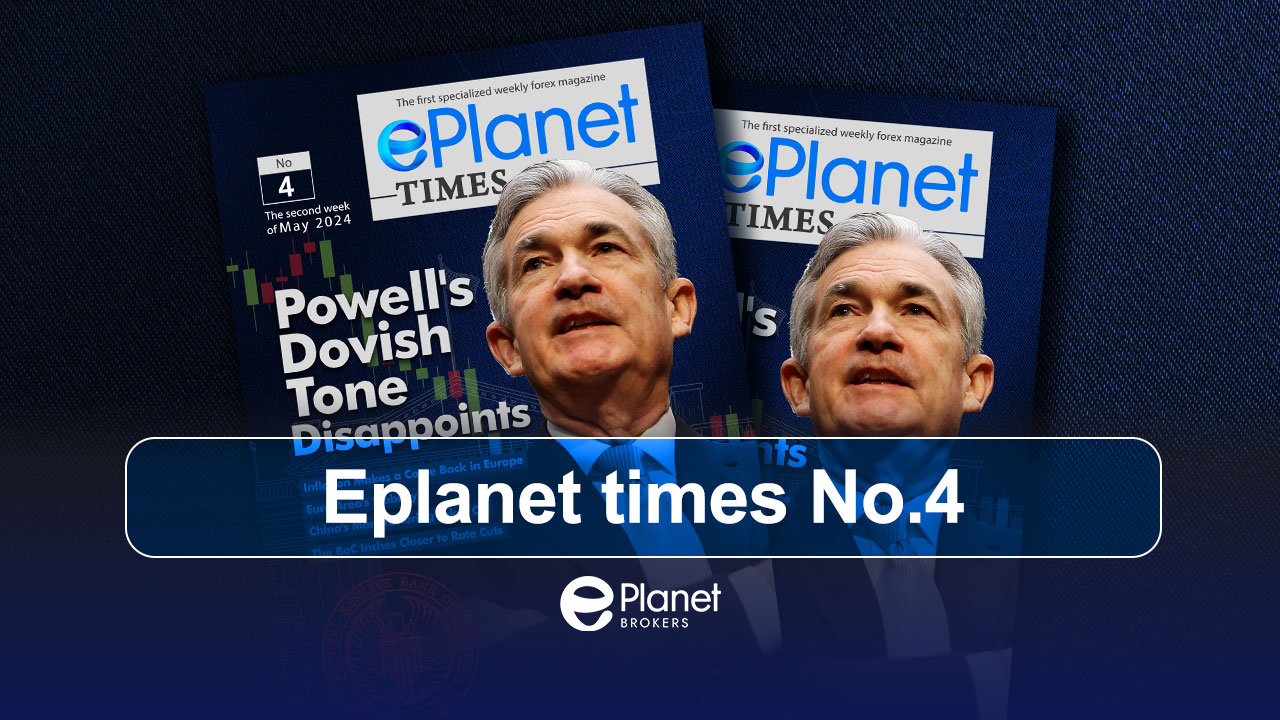Definition of forex market and its importance
The forex market is a global market where traders and investors buy and sell various assets 24/7. Forex trading is done online and is based on the derivative value of assets, which means that there is no physical exchange of assets.
Various assets can be traded in the forex market, the most important of which are valuable currency pairs, Commodities such as precious metals (gold, silver, copper, etc.), oil, natural gas, futures contracts and options, as well as cryptocurrencies such as Bitcoin, Ethereum, etc.
One of the important features of this market is its decentralization, which means that instead of controlling everything by a central exchange, such as the New York Stock Exchange, the Forex market is managed and monitored by a global network of banks and financial institutions, so manipulation is practically impossible to make illegal profits in this market, so it is a safe space for professional and experienced traders to make profits using their skills.
It is enough to express the importance of this market that Forex is the largest and most liquid market in the world. In 2020, the global forex market was valued at $2.4 quadrillion. However, it is interesting to know that this market did not exist a century ago. Unlike stock markets, whose roots can be traced back centuries, the forex market in its current form is a truly new market.
Understanding the key terms in Forex trading
In order to get to know the forex market, we must first know the terms and keywords of this market. Therefore, In the following, the most important terms of Forex market are mentioned.

Broker
A forex broker is a financial service provider that enables buying and selling in the forex market. In a way, it is a dealer between brokers and banks that allows you to trade foreign currency pairs and other assets in the global market. in the past, a forex broker bought and sold assets on your behalf. But todays, many forex brokers operate online and offer trading platforms for you to fulfill your wishes.
Currency pair
A currency pair expresses the value of two different currencies relative to each other, where one is quoted against the other. The first currency listed in a pair is known as the base currency and the second one is known as the quote. For example, EURUSD is a currency pair where the euro (EUR) is the base currency and the US dollar (USD) is the quote currency.
Bid and Ask
Bid and Ask prices are actually bid and ask prices in an asset. Ask is defined as the maximum price a buyer is willing to pay for a security or asset. Typically, the ask price is lower than the bid price, which is the lowest price the seller is willing to accept.
Margin
Margin is the amount of money that a trader must deposit with his broker to trade in the market. The trader basically deposits to ensure that he can cover potential losses.
Pip
Pip stands for Point In percentage, which is the smallest unit of price movement of a currency pair and is used to determine the profit and loss of transactions. All currency pairs usually define a pip as four decimal places, except for the Japanese yen, which has only two decimal places.
Lot
A lot refers to a standard measure of the amount of a tradable financial asset. Lot size depends on the specific market and the asset being traded, but in general, a lot represents a specific number of units of the asset. Buying or selling a lot means trading one unit of an asset.
Leverage
Leverage is capital which borrowed from the broker to increase the size of transactions and thus earn more profit. In other words, traders use leverage to increase their trading power. It should be noted that increases the profit as well as the loss.
Spread
Spread is the difference between the bid and ask price of a security or asset. The bid price is the highest price a buyer is willing to pay for a security, while the ask price is the lowest price a seller is willing to accept.
Take Profit
take profit (T/P) is an order which used in a trading platform to close a position after reaching a specified profit target. This allows traders to profit from the price movement by closing their position at the optimal price level.
Stop Loss
Stop loss is a type of order used in trading to limit potential losses by automatically closing a position at a predetermined price level. When placing a stop loss, the trader sets a specific price level at which he wants to exit the position to limit his loss. If the market reaches specified level, the order is activated then the trader’s position is closed.
Risk management
Risk management is the process of identifying, evaluating, controlling and reducing potential risks that can adversely affect an investment or transaction. Risk management involves understanding and analyzing potential risks, which ultimately leads to setting strategies to manage or minimize them. In trading, this means using risk management tools, such as stop loss, to limit the amount of potential losses.
Candlestick
Candlesticks are a visual representation of the size of price fluctuations. Traders use this tool to identify patterns and measure the direction of short-term price movements.
Resistance
Resistance is a significant price level that an asset has historically struggled to exceed. This acts as a barrier where sellers are more willing to sell their holdings and put downward pressure on the price which usually makes it challenging for the asset to continue the upward movement and break the resistance level.
Support
Support is an important price level that an asset has historically struggled to break below. This acts as a barrier where buyers are more willing to buy the asset, putting upward pressure on the price. This increase in buying activity usually makes it difficult to continue the downward movement and break the support level.
Commission
Broker commissions, fees charged by brokers when they execute trades on your behalf, vary depending on several factors. These include the type of account you hold, the asset you’re trading (stocks, options, futures, etc.), the size of the transaction and the services offered by the broker. Importantly, commissions are typically only charged when your order is filled, meaning the trade is completed. However, some brokers may also charge fees for canceling or modifying orders, so It is essential to review a broker’s specific policies before placing a trade.
Position Sizing
Position sizing, the core concept in risk management for traders, refers to the amount of capital dedicated to a single trade. It’s a balancing act between maximizing potential returns and minimizing potential losses. Several factors influence determining the size of a trading position: the account size, risk tolerance, stop-loss placement and the volatility of the asset being traded. By carefully considering these factors and employing a consistent position sizing strategy, traders can minimize the risk of ruin while still capitalizing on profitable opportunities.

How currency pairs work in the forex market?
Before proceeding, it is important to understand what a currency pair is and how it moves. In general, each pair consists of two currencies in which the value of one currency is compared and measured against the other.
In a currency pair, the first currency is called base and the second is called quote. This rule is the same regardless of the name and type of currency pair you are trading. Now the question may be raised, how to make profit in the forex market by using currency pairs. The key to the question is understanding the performance of currency pairs. Basically, there are three situations in which the price of any currency pair can move up or down:
The first case: the base currency can be strengthened or weakened.
The second: the quoted currency can be strengthened or weakened.
The third: the base currency is strengthened and the quoted currency is weakened or vice versa.
Since the forex market is never closed, the value of currencies is always changing, so the price of currency pairs is always moving up or down. For example, if the EUR (the base currency) strengthens while the US dollar remains unchanged as the quote currency, the EURUSD currency pair will rise. Conversely, if the euro weakened, the pair would fall.
On the other hand, if the US dollar (quote currency) strengthens, the EURUSD will fall, and if the dollar weakens, the currency pair will rise as the euro gains relative strength against the US dollar.
By predicting price movements in currency pairs, traders usually make transactions and earn profits. Various technical and fundamental methods can be used to predict the price movements.
The difference between buying and selling transactions in forex
In general, the forex market is a two-way market. This means that the trader can make a profit from both buying and selling a pair. But it should be noted that trading in currency pairs is in the form of CFD, which is a contract based on the difference in the value of an asset, in which the trader earns profit by using the difference between the enter and exit prices.
Due to the fact that transactions in currency pairs are done bilaterally, therefore, the use of the terms buying and selling in currency pairs transactions may not be very relevant. In this context, the use of the words “long” and “short” may explain the correct meaning of trading in currency pairs.
Long position
When the price of a currency pair is in an upward trend, the trader takes a long position. In entering this transaction, the trader buys the base currency and sells the quote currency. When a trader close the long position, it means selling the base currency and buying the quote currency. As you can see, there is a buy and a sell in each entry and exit in the long position.
Short trades
Contrary to the long, when the price of a currency pair is in a downward trend, the trader takes the short position. Entering this transaction is equivalent to selling the base currency and buying the quoted currency. When a trader exits the short, it means he is buying the base currency and selling the quote currency. In every entry and exit that takes place in the short, there is a purchase and a sale.

Basic skills for beginners in forex
Any beginner who wants to enter the forex market should generally learn two types of skills: general skills and specialized skills.
General skills
This type of skills generally provides understanding the requirements of forex, is divided as follows:
- Knowledge of general terms of the forex market
- Understanding different types of assets such as currency pairs and their types, types of commodities, cryptocurrencies and etc.
- Knowledge of identifying suitable brokers and how to register and open an account and getting to know demo and real types of accounts.
- Learning practical platforms, such as TradingView, MetaTrader 4 and 5, and CTrader, which are used both in doing trade and technical analysis as the most important general skill.
special skills
After a beginner has known the requirements of entering the market, he should also learn the skills of reading the chart, analyzing the price and recognizing the situations of taking correct positions. In this regard, the most important specialized skills are as follows:
- Understanding types of price charts such as candlesticks, line charts, Heiken Ashi, etc.
- Learning various technical analysis methods and choose one of the desired methods through study or participation in training classes.
- Getting to know the basics of fundamental analysis with the aim of learning market action and predicting future price movements.
Types of Traders Depending on Trading Strategies
While everyone in the financial markets chases the same goal which is profit, the paths they take are as diverse as the markets themselves. Trading strategies are a personal blend of skills, risk tolerance, account size, and preferred activity level. These factors shape what kind of trader you become:
- Scalpers: These types of traders are known to be very quick and aggressive as they get into trading positions. They enter and exit positions within seconds or minutes, aiming for small profits averaging from 5-10 pips on each trade. This high-speed approach demands a high tolerance for risk, as well since scalpers are constantly in and out of the market. The frequent trading also generates more costs compared to other styles due to commissions and fees. However, scalping’s potential for quick profits and minimal overnight risk continues to attract many traders despite the inherent risks. Successful scalpers can capitalize on small price movements throughout the day, and by exiting trades quickly, they avoid the potential for unexpected news events to impact their positions overnight.
- Day Traders: Day traders are the market’s aim for swift profits within a single trading day. They rely on technical analysis and high market volume to identify potentially profitable trading opportunities. Their strategies involve entering and exiting positions quickly, capitalizing on short-term price movements. They usually pay attention to 5-min, 15-min and 1 hour timeframes. While this approach offers the potential for rapid gains, it also demands constant focus, discipline, and a high tolerance for risk. Day traders face the pressure of making numerous decisions throughout the day, and a single miscalculation can quickly erode their profits.
- Swing Traders: These traders, unlike the day traders, navigate the market with a mid-range approach. They seek to “ride the wave” of trends for a few days or weeks, aiming to capture momentum before the market shifts direction. Their strategy relies on a blend of technical and fundamental analysis to identify these trends. Swing traders hold positions longer than day traders, allowing them to potentially capture larger profits. However, this also means they’re exposed to some overnight risk and require a good understanding of both short-term price movements and the underlying factors influencing the asset’s value. Swing Traders aim to gain at least 50 to 300 pips worth of profit from each trade and mainly focus on the 1-hour and 4-hour timeframes.
- Position Traders: Position traders are the patient hunters of the financial world. Unlike their fast-paced counterparts, they take a long-term view, holding their trading positions and investments for months or even years. Their focus is on fundamental analysis, seeking to identify companies or assets with strong underlying value and long-term growth potential. This strategy prioritizes stability and capital appreciation over quick gains. While position trading offers the potential for significant returns, it also demands a high degree of patience and discipline. Position traders must be comfortable with market fluctuations and trust their long-term analysis, even when short-term volatility might seem to create possible losses. They seek to at least gain 300 pips worth of profit from each trade and do not pay attention to timeframes lower than 4 hours.




















